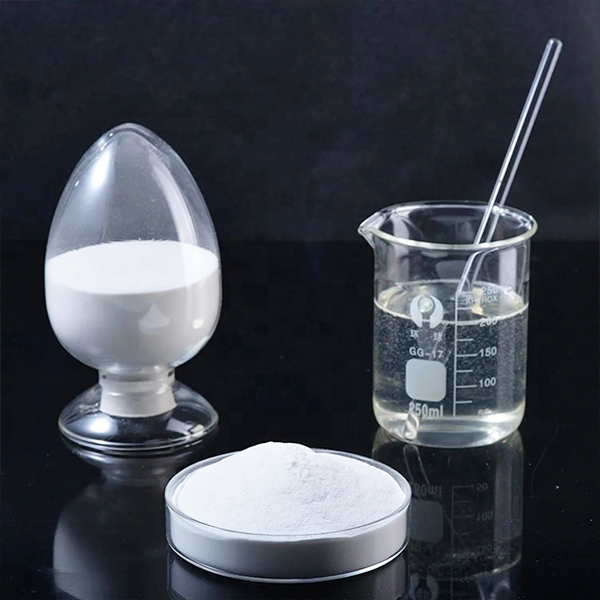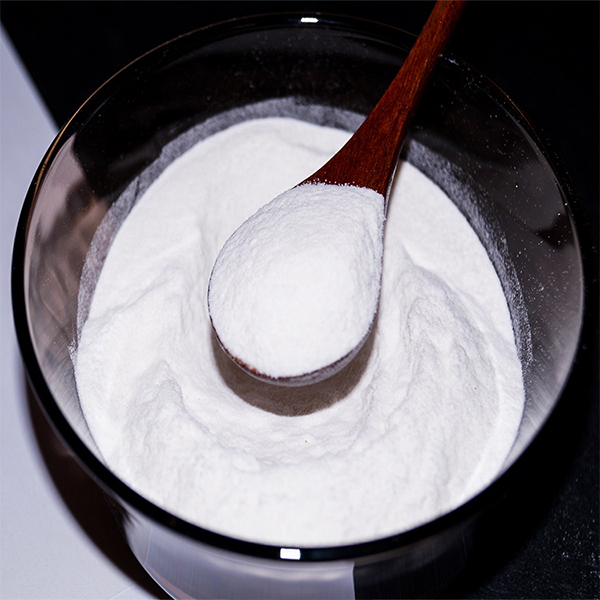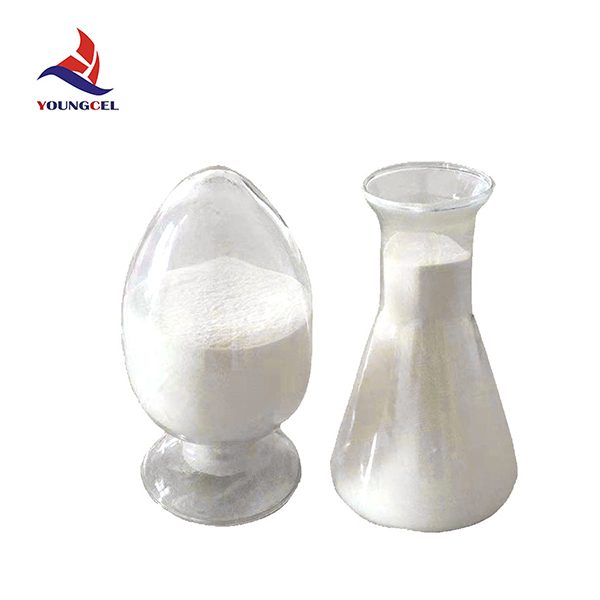The Pivotal Role of Cellulose Ethers in Modern Construction Chemistry
In the rapidly evolving landscape of construction materials, the demand for high-performance additives that enhance durability, workability, and efficiency has never been greater. Among these critical components, Cellulose Ethers MHEC Methyl Cellulose Hydroxyethyl Cellulose Cement mortar grade chemical additives stand out as indispensable rheology modifiers and water retention agents. These highly specialized polymers, derived from natural cellulose, play a transformative role in a multitude of cement-based applications, from tile adhesives and self-leveling compounds to renders and grouts. The industry trend is moving towards eco-friendly and high-efficiency building solutions, where such additives become paramount. They address common challenges in mortar applications, such as rapid drying, poor workability, and insufficient adhesion, by precisely controlling water migration and modulating rheological properties. Their versatile molecular structure allows for tailored modifications, making them suitable for diverse climatic conditions and specific performance requirements, thereby significantly contributing to the overall quality and longevity of construction projects. The meticulous selection and integration of these additives are crucial for achieving optimal performance, ensuring that construction materials meet stringent international standards for strength, flexibility, and sustainability. The increasing complexity of modern architectural designs further necessitates the use of advanced chemical additives to ensure structural integrity and aesthetic appeal, positioning cellulose ethers as foundational elements in contemporary building chemistry.

The continuous innovation in mortar formulations relies heavily on the synergistic effects of various chemical additives, with cellulose ethers forming the backbone of rheological control. MHEC (Methyl Hydroxyethyl Cellulose), Methyl Cellulose (MC), and Hydroxyethyl Cellulose (HEC) each offer distinct property profiles, making them suitable for specific applications based on their thickening efficiency, water retention capacity, and open time extension. For instance, MHEC is widely favored for its excellent water retention and sag resistance, making it ideal for thick-bed applications like tile adhesives. Methyl Cellulose, known for its high viscosity and pseudoplasticity, is often employed in renders and plasters to improve workability and anti-slip properties. HEC, on the other hand, provides good water retention and compatibility with various admixtures, finding its place in self-leveling compounds and cement-based paints. The precise balance of these properties is achieved through meticulous manufacturing processes and quality control, ensuring that the end product consistently delivers superior performance. This level of technical sophistication underscores the expertise required in developing and supplying such critical components. As urban development accelerates globally, the demand for reliable and high-performance building materials will only intensify, solidifying the strategic importance of advanced chemical additives like these. Understanding the nuances of each cellulose ether variant is crucial for specifiers and formulators aiming to optimize their mortar systems for specific project demands and environmental conditions, ultimately enhancing construction efficiency and durability.
The Advanced Manufacturing Process of High-Grade Cellulose Ethers
The production of high-quality Cellulose Ethers MHEC Methyl Cellulose Hydroxyethyl Cellulose Cement mortar grade chemical additives involves a complex, multi-stage chemical synthesis process that begins with high-purity refined cellulose, typically sourced from wood pulp or cotton linters. This natural polymer undergoes a series of meticulously controlled reactions to graft specific functional groups onto its molecular backbone, thereby modifying its physical and chemical properties for optimal performance in cementitious systems. The primary steps typically include mercerization, etherification, neutralization, washing, drying, and grinding. In the mercerization stage, cellulose is treated with a strong alkaline solution, such as sodium hydroxide, to swell the cellulose fibers and make the hydroxyl groups more reactive. This step is critical for preparing the cellulose for the subsequent etherification reaction. Following mercerization, the alkaline cellulose is reacted with etherifying agents. For Methyl Cellulose, methyl chloride is used; for Hydroxyethyl Cellulose, ethylene oxide is the primary agent; and for MHEC, both methyl chloride and ethylene oxide are employed sequentially or simultaneously. These reactions occur under precise temperature and pressure conditions within specialized reactors to ensure high substitution efficiency and uniform distribution of substituents, which directly impacts the product's solubility, viscosity, and water retention capabilities. The control of side reactions is paramount to achieve a clean, high-ppurity product.

After the etherification process, the crude product undergoes neutralization to remove excess alkali and then extensive washing to eliminate impurities, such as sodium chloride and unreacted reagents. This purification step is crucial for achieving the high purity levels required for cement mortar applications, ensuring that the additive does not interfere with cement hydration or introduce unwanted side effects. Advanced washing techniques, often involving hot water circulation and filtration, are employed to meet stringent quality benchmarks. Subsequently, the purified cellulose ether is subjected to a precise drying process, commonly using flash dryers or rotary dryers, to reduce its moisture content to specified levels, typically less than 5.0%. The final stage involves fine grinding and sieving to achieve a consistent particle size distribution, which is vital for proper dispersion and dissolution in mortar mixes. Throughout the entire manufacturing chain, stringent quality control measures are implemented. Products are rigorously tested against international standards such as ISO 9001 for quality management systems and often comply with specific industry standards for cement additives. Regular inspections, from raw material verification to final product performance testing, ensure batch-to-batch consistency and guarantee the product's specified shelf life and stability when used in construction applications. This meticulous production approach underpins the reliability and high performance of our Cellulose Ethers MHEC Methyl Cellulose Hydroxyethyl Cellulose Cement mortar grade chemical additives, enabling them to meet the exacting demands of the global construction industry and provide predictable, superior results in diverse climatic conditions.
Technical Specifications and Performance Advantages
| Parameter | MHEC (Cement Mortar Grade) | Methyl Cellulose (Cement Mortar Grade) | Hydroxyethyl Cellulose (Cement Mortar Grade) |
|---|---|---|---|
| Appearance | White to Off-white Powder | White to Off-white Powder | White to Off-white Powder |
| Viscosity (mPa.s, 2% soln, NDJ-1 @ 20°C) | 10,000-100,000 | 5,000-80,000 | 5,000-50,000 |
| Moisture Content (%) | ≤ 5.0 | ≤ 5.0 | ≤ 5.0 |
| pH (2% soln) | 5.0-8.0 | 5.0-8.0 | 6.0-8.5 |
| Water Retention (%) (28 days mortar) | > 90 | > 85 | > 80 |
| Ash Content (%) | ≤ 3.0 | ≤ 3.0 | ≤ 3.0 |
| Bulk Density (g/cm³) | 0.30-0.50 | 0.25-0.45 | 0.30-0.55 |
The performance of our Cellulose Ethers MHEC Methyl Cellulose Hydroxyethyl Cellulose Cement mortar grade chemical additives is defined by a precise set of technical parameters, as detailed in the table above. These parameters, including viscosity, moisture content, pH, water retention, and bulk density, are critical indicators of product quality and functional efficacy. Viscosity, measured in mPa.s for a 2% solution at 20°C using a standard viscometer like the NDJ-1, directly influences the rheological properties of the mortar, affecting its workability, sag resistance, and pumpability. Higher viscosity grades are crucial for vertical applications, preventing mortar slump, while lower viscosity grades are suitable for self-leveling compounds where flow is desired. Water retention, a paramount property for cement mortar additives, quantifies the ability of the additive to prevent water from rapidly evaporating or being absorbed by porous substrates. High water retention ensures adequate hydration of cement, leading to improved bond strength, reduced shrinkage cracking, and extended open time for application, particularly vital in hot and dry climates. For example, a water retention rate exceeding 90% for MHEC products signifies superior performance in critical applications.

Beyond these key parameters, the intrinsic advantages of these additives are multifaceted. They significantly enhance the cohesion and adhesion of mortar mixes, leading to stronger bonds with various substrates like concrete, masonry, and insulation boards. This improved adhesion is particularly beneficial for exterior insulation and finish systems (EIFS) and tile installations, where bond strength is paramount for long-term stability. The enhanced thixotropy provided by these cellulose ethers prevents premature settling of aggregates, maintaining homogeneity within the mortar mix during application. Moreover, their ability to introduce stable air entrainment, without compromising strength, can improve the freeze-thaw resistance of hardened mortar, extending the lifespan of outdoor structures in harsh environmental conditions. The controlled set time and open time provided by these additives give applicators more flexibility, reducing waste and improving overall project efficiency. Compliance with international standards such as ISO and ANSI (e.g., ANSI A118.4 for modified dry-set cement mortars) underscores the reliability and consistent performance of our products. Our commitment to rigorous testing and adherence to these standards ensures that our Cellulose Ethers MHEC Methyl Cellulose Hydroxyethyl Cellulose Cement mortar grade chemical additives not only meet but often exceed industry expectations, offering a robust solution for diverse construction challenges and reinforcing their position as a superior choice for high-performance cementitious systems.
Diverse Applications and Tailored Solutions in Construction
The versatility of Cellulose Ethers MHEC Methyl Cellulose Hydroxyethyl Cellulose Cement mortar grade chemical additives extends across a broad spectrum of construction applications, making them indispensable components in modern building chemistry. In tile adhesives, they are crucial for providing excellent water retention, ensuring proper cement hydration and thus maximizing bond strength, especially when bonding porous tiles to absorbent substrates. Their thickening properties prevent tile slump on vertical surfaces and extend the open time, allowing installers more flexibility. For self-leveling compounds (SLCs), specific low-viscosity grades of cellulose ethers are employed to ensure optimal flow and leveling while preventing segregation of aggregates, leading to smooth, uniform floor surfaces. In exterior insulation and finish systems (EIFS) and renders, these additives enhance adhesion to insulation boards, improve crack resistance, and provide excellent workability for trowel application, ensuring a durable and aesthetically pleasing facade. Similarly, in joint fillers and grouts, they contribute to reduced shrinkage, improved crack resistance, and enhanced water retention, which are vital for long-lasting, water-resistant seams.

Beyond these common uses, our Cellulose Ethers MHEC Methyl Cellulose Hydroxyethyl Cellulose Cement mortar grade chemical additives are also critical in specialized applications such as skim coats, masonry mortars, and cement-based paints, where precise rheological control and water retention are paramount for superior finish and performance. Our extensive experience in the field, spanning over a decade, allows us to offer not just standard products but also highly customized solutions. We collaborate closely with clients, understanding their specific project requirements, regional climate variations, and raw material characteristics to formulate cellulose ether grades that are perfectly optimized for their unique mortar systems. This bespoke approach ensures that whether a project demands enhanced sag resistance for large-format tiles or superior crack resistance for thin-layer renders in extreme temperatures, we can deliver a solution that precisely matches their needs. Our technical support team assists in dosage optimization and compatibility testing, providing comprehensive service that extends beyond product delivery. This ability to tailor solutions, combined with our commitment to consistent product quality, differentiates us in the competitive market and builds enduring partnerships based on trust and demonstrated technical authority. Our products have been successfully implemented in thousands of construction projects globally, receiving positive feedback for enhancing application efficiency and long-term structural integrity.
Ensuring Trust and Reliability: Quality Assurance and Support
At Youngcel, our unwavering commitment to quality and customer satisfaction is fundamental to our operations. We ensure the trustworthiness and reliability of our Cellulose Ethers MHEC Methyl Cellulose Hydroxyethyl Cellulose Cement mortar grade chemical additives through stringent quality assurance protocols that adhere to international benchmarks. Our manufacturing facilities are certified under ISO 9001 for quality management systems, guaranteeing consistent product quality from raw material sourcing to final delivery. Each batch undergoes rigorous testing in our state-of-the-art laboratories, assessing critical parameters such as viscosity, water retention, and particle size distribution to ensure they meet our published specifications and industry standards like EN 12004 for tile adhesives or ASTM standards for cementitious materials. Our extensive service history, with over 15 years in the cellulose ether industry, is a testament to our expertise and the enduring trust placed in us by our global clientele. We are proud of our partnerships with leading construction material manufacturers worldwide, who rely on our consistent supply and superior product performance. Test reports and certifications are readily available upon request, providing transparent validation of our product claims.
Frequently Asked Questions (FAQ)
Q: What is the recommended dosage for different mortar applications?
A: The optimal dosage for Cellulose Ethers MHEC Methyl Cellulose Hydroxyethyl Cellulose Cement mortar grade chemical additives varies significantly based on the specific mortar formulation, desired performance characteristics (e.g., water retention, sag resistance, open time), and other additives present. Typically, it ranges from 0.1% to 0.5% by weight of cement. For precise recommendations, we advise conducting preliminary trials or consulting with our technical support team, who can provide tailored guidance based on your specific raw materials and application requirements. We offer extensive support during the formulation development phase.
Q: How does the viscosity of cellulose ethers impact mortar performance?
A: Viscosity is a critical parameter for our Cellulose Ethers MHEC Methyl Cellulose Hydroxyethyl Cellulose Cement mortar grade chemical additives. Higher viscosity grades generally provide superior water retention, thickening, and anti-sag properties, which are crucial for applications like tile adhesives and thick-bed mortars, preventing slump on vertical surfaces. Lower viscosity grades might be preferred for self-leveling compounds where fluidity and excellent flow are paramount to achieve a smooth, even surface. The choice depends on the specific rheological demands of the final mortar product and the desired application method. Our range covers a wide viscosity spectrum to suit diverse needs.
Q: What are the storage conditions and shelf life for your products?
A: To maintain product integrity and optimal shelf life, our Cellulose Ethers MHEC Methyl Cellulose Hydroxyethyl Cellulose Cement mortar grade chemical additives should be stored in a cool, dry place, away from direct sunlight and moisture. The original sealed packaging helps prevent moisture absorption and caking. Under proper storage conditions, our products typically have a shelf life of 24 months from the manufacturing date. We provide detailed storage guidelines with each shipment to ensure product efficacy upon arrival and through its intended use period. Our robust packaging solutions are designed to protect the product during transit and storage.

Our commitment to our clients extends beyond just product quality. We offer comprehensive pre-sales and after-sales technical support, providing expert guidance on product selection, formulation optimization, and troubleshooting. Our dedicated customer support team ensures efficient order processing and timely delivery, with a typical delivery cycle ranging from 7 to 14 days depending on destination and order volume. We maintain sufficient stock levels for common grades to facilitate prompt shipments. Every purchase is backed by our robust quality assurance, providing a product warranty that guarantees performance according to our technical data sheets when stored and used as recommended. In the unlikely event of any issue, our responsive team is committed to finding rapid and effective solutions. This holistic approach, encompassing rigorous quality control, extensive technical expertise, and proactive customer service, cements our reputation as a trusted partner for high-performance Cellulose Ethers MHEC Methyl Cellulose Hydroxyethyl Cellulose Cement mortar grade chemical additives in the global construction chemical market, giving our clients the confidence to rely on our products for their most demanding projects.
References and Further Reading
- Taylor, H.F.W. (1997). Cement Chemistry. Thomas Telford Publishing. (Widely regarded as a foundational text in cement science, providing in-depth understanding of cement hydration and microstructure.)
- Uhrlandt, D., Hutter, M., & Lechner, T. (2014). Cellulose Ethers: Synthesis, Properties, and Applications. Springer. (A comprehensive review covering the chemical synthesis, physical properties, and diverse industrial applications of cellulose ethers, including their role in construction.)
- Knopf, R. (2007). The Rheology of Cement-Based Materials. CRC Press. (Focuses on the rheological behavior of fresh cementitious mixtures and the impact of various admixtures, including cellulose ethers, on workability and stability.)
- American Concrete Institute (ACI) Committee 212. (2010). Admixtures for Concrete (ACI 212.3R-10). American Concrete Institute. (Provides detailed information on various types of admixtures used in concrete, their mechanisms, and effects on concrete properties, offering insights relevant to mortar additives.)
- ASTM International. (Various Standards). Standards for Cement and Concrete. (ASTM publishes numerous standards relevant to the testing and specification of cement, concrete, and mortar, including those for chemical admixtures and their performance.)
- European Standard EN 12004. (2017). Adhesives for tiles - Requirements, evaluation of conformity, classification and designation. (An essential standard for tile adhesives, outlining performance requirements that are significantly influenced by cellulose ether additives.)
-
Rdp that The Revolutionary Polymer Powder Transforming Modern Construction MaterialsNewsAug.11,2025
-
Hpmc Powder that Versatile Additive for Detergents and Personal CareNewsAug.11,2025
-
Hpmc Hydroxypropyl Methylcellulose that Essential Building Material Additive from Shijiazhuang Gaocheng YongfengNewsAug.11,2025
-
Hydroxypropyl Methyl Cellulos Hpmc that Essential for Construction ApplicationsNewsAug.11,2025
-
Mhec Powder that Revolutionizing Construction Chemistry with Cellulose Ether SolutionsNewsAug.11,2025
-
Industri Hpmc that The Global Backbone of Advanced ConstructionNewsAug.11,2025




